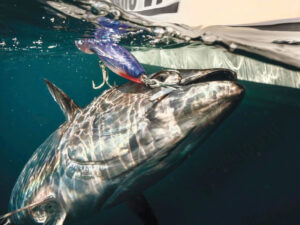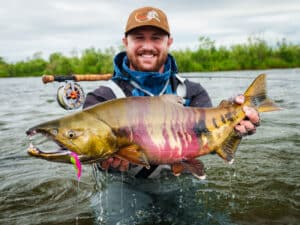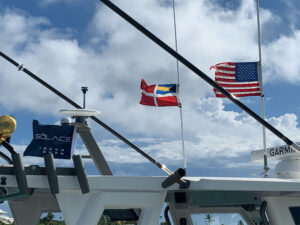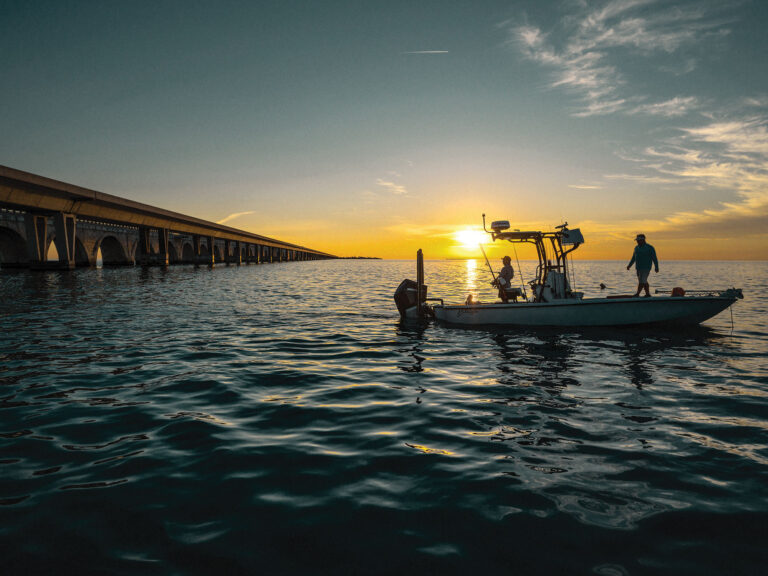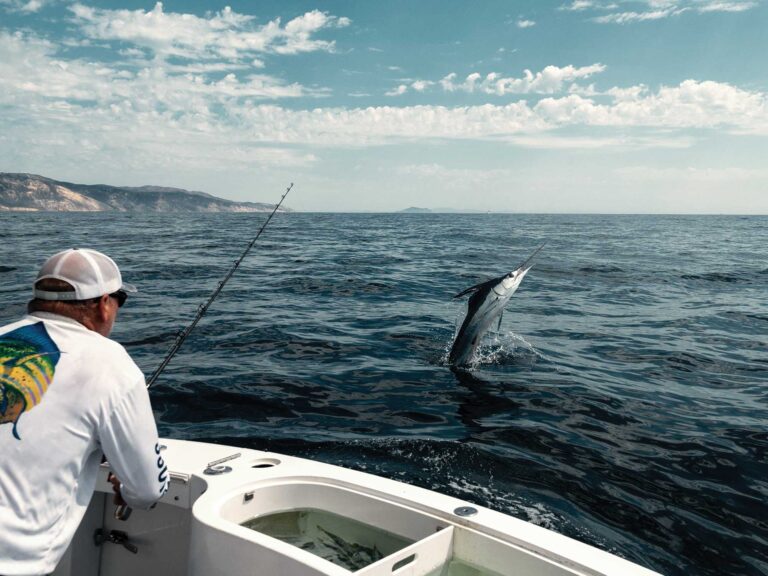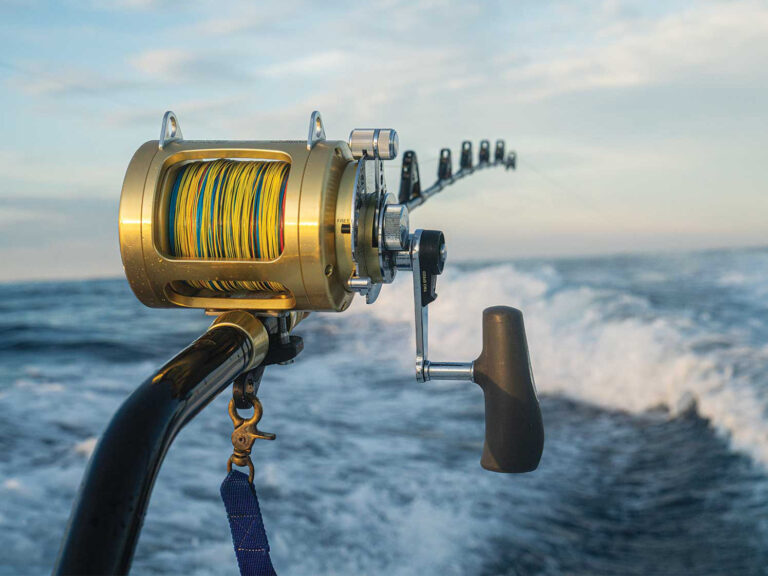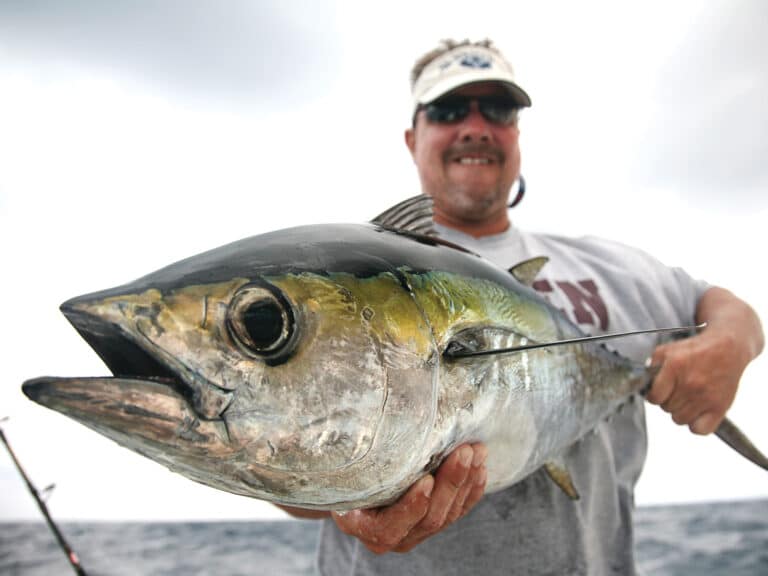
In the southern Gulf of Mexico, off the southwest Florida coast between Naples and the Florida Keys, numerous wrecks, reefs and other bottom irregularities attract baitfish and, in turn, predators. These predators include permit, cobia, jacks, tarpon, king mackerel, tripletail, grouper and snapper, with a ubiquitous supply of barracuda and sharks thrown in. Truth is, you never know what will show up at a Gulf wreck, and most of these species like the heat of summer just fine.
Permit and cobia, inherently curious fish, often rise to check out your boat as you approach a spot, and the permit tend to circle a given area repeatedly, making passes by the boat and affording repeated casting opportunities. Light tackle works great in these situations, with a few notable exceptions, and it’s a great place to hone your casting skills. Plus, there are dozens of these wrecks to explore within an easy run of several South Florida jumping-off points.
This type of fishing is fun, productive and diverse, so here are eight tips to help you maximize your chances of scoring on Gulf wrecks this summer:
**1. Crabs Make the Difference
**No other bait compares to a small, live crab when it comes down to effectiveness on Gulf wrecks. Virtually everything that swims out there will eat them, with permit and cobia at the head of the list. A dollar-sized crab hooked through one point of its shell can be cast, drifted in the mid-water column or fished with a lead sinker on the bottom. A crab cast in front of a school of permit rarely escapes intact.
Just make sure you pinch off their claws before you put them in the livewell! And don’t trust the bait shop to get them all. There’s nothing more startling than reaching into the well as a school of 100 permit swim by, only to have one of the little critters latch onto your finger. It’s amazing how bad that hurts, plus your subsequent gyrations will undoubtedly spook the permit.
As good as crabs are, you also need a plentiful supply of pinfish in the well. Pinfish run a close second to crabs in the effectiveness department, and you should always have one soaking on the bottom while anchored. Everything except permit will eat a pinfish.
2. Rig for Diversity
Always keep an array of tackle rigged and ready when on the wrecks, since you never know what’s going to swim by. I like to keep two stout plug rods rigged, one with a 2- or 3-ounce bucktail jig with a 6-inch grub-tail attached (deadly for cobia), and another with a large, noisy topwater plug on it. The topwater works well for irritating the schools of barracuda, and if a large amberjack or jack crevalle shows up, all the better since they also attack plugs with enthusiasm.
It also pays to keep small bucktail jigs rigged on light outfits. I always keep a 6- and 8-pound rod ready for smaller cobia, blue runners, jacks and mangrove snappers. These light outfits provide lots of fun, and there’s almost always a fish eager to take an artificial.
3. Fish the Entire Water Column
It’s easy to do on a wreck in 10 feet of water, but it takes a little extra forethought to do it effectively if you’re on a deeper wreck. What works in 10 feet may not work in 50. Pay close attention to your sounder and make sure you’re presenting baits at every level where you mark fish. You may need to experiment with different-sized sinkers and longer leaders to make it work, but sometimes schools of fish hold deeper than usual, and your bait has to get down into the right zone.
If the fish don’t see it, they won’t eat it, and by utilizing the entire water column, especially where you’re marking something, you may entice a strike you would otherwise miss. Obviously, match the tackle as well. If you’re dropping to the bottom for that big grouper, a 6-pound outfit is probably a bad choice.
4. Rig for Stealth
Both permit and cobia can be enthusiastic eaters at times, but they can also drive you crazy, exhibiting frustrating cases of piscatorial lockjaw. You often must wait out these periods (usually until a tide change), but rigging correctly in the first place will help bring on the most bites.
Fluorocarbon leaders make a big difference, even though the water tends to be slightly murky in the Gulf. I go with 30-pound fluorocarbon for permit and 50-pound for cobia and other, larger species. I always carry larger and smaller diameters, as well, to be prepared in all situations, but those two sizes seem to work well day-to-day.
I use circle hooks exclusively, preferring the offset Owner Mutu Light series in 3/0 (for permit) and 5/0 for just about everything else. These hooks almost never miss, and since most of the species you’re liable to encounter out there are decisive eaters, you rarely need a drop-back and therefore almost never gut-hook a fish you intend to release.

5. Use Chum Judiciously
Unless you’re specifically targeting snapper and grouper, frozen chum may cause more harm than good. That’s because the Gulf has a large population of sharks of all sizes, and they home in on chum quicker than just about anything. I’ve seen everything from small blacktips and bonnetheads to tiger sharks and hammerheads weighing close to 1,000 pounds out there.
One exception is if you want to collect some live bait on site. Many wrecks teem with bait schools in the summer; ballyhoo, threadfin herring and razor-belly sardines (pilchards) are the most common. With a little chum and a Sabiki rig, you can load a livewell in a hurry. Just watch out for those sharks.
6. Use Your Eyes
The visual aspect of Gulf wreck fishing can’t be overstated. Keep your eyes open and train yourself to recognize subtle signs indicating the presence of fish. The first time I ever went Gulf wreck fishing, we pulled up to a spot and were greeted by at least 100 permit tails piercing the slick-calm surface. We didn’t need sophisticated spotting skills that day!
But many times the fish are much harder to see, especially on overcast days. Telltale wakes and boils will alert you to the presence of fish, as will signs like a sudden spray of baitfish far away from the boat. Key in on these signs and learn to use them to your advantage.
The difference between an angler who can read these signs and one who can’t becomes substantial on days when the fish are not showing themselves in an obvious manner. Only trial-and-error will help you get better at it, but fortunately, that’s a fun process.
7. Anchor Right – Or Not At All
We all know how much fun anchoring can be, but to maximize your chances of success, you really need to get close to a spot. Some Gulf wrecks offer a large profile to aim for (there are quite a few sunken shrimp boats out there), while others are quite small. Honing your anchoring skills will help you get situated for maximum effectiveness and therefore increase your chances of success.
This means becoming adept at gauging the effects of wind and tide on your boat. Always know where you are in the tide cycle, and don’t be hesitant about re-anchoring if you miss it the first time. Repeat the process as many times as necessary until you get the boat positioned directly up-current from the wreck or reef.
But if permit and cobia interest you more than traditional bottom species, it may be more effective to simply drift repeatedly over a given spot. That way, you can cast to passers-by as they circle the area, and those who want to can drop baits down to the wreck during the drift.
Plus, you’ll find a surprising number of fish congregating in the water column near a piece of structure, but not necessarily right on top of it. By drifting and closely monitoring your sounder, you cover more area and get shots at multiple schools of fish or individuals that you might miss if anchored.
8. Fly a Kite
Whether you choose to anchor or not, a large bait suspended under a kite while fishing for the aforementioned species will almost always bring on a massive strike from something. You will inevitably have to deal with barracudas and sharks on a kite, but other species will show up as well.
These include large, smoker kingfish that come to the wrecks in search of the bait pods. Wire leaders are obviously necessary. Tarpon also attack kite baits on occasion, and that’s a very cool bite, too. The kite simply adds another dimension to an already diverse fishing experience; it just depends on how diverse you want to get.
No matter what array of tackle you choose to deploy, you will undoubtedly find summer Gulf wreck fishing to be one of the most productive – and the most fun – fishing situations you’ve ever experienced.

